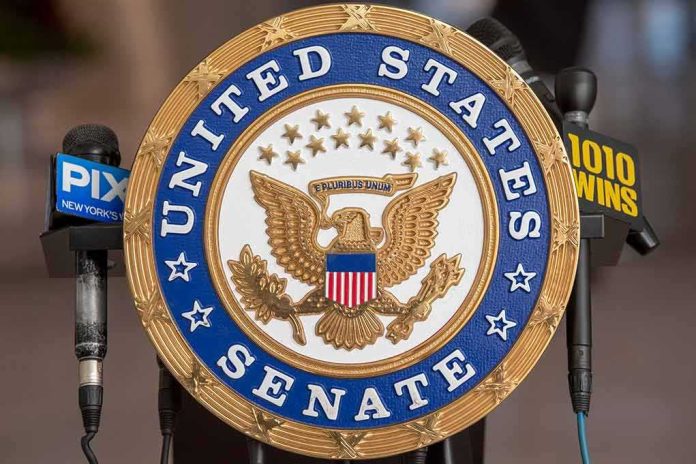
When a U.S. Senate candidate admits he once wore a Nazi symbol on his chest, the line between apology, accountability, and political survival becomes a razor’s edge—and the nation can’t look away.
Story Snapshot
- Graham Platner, a Maine Senate hopeful, covered up a Nazi-associated tattoo after its discovery ignited public outrage.
- Platner claims ignorance of the symbol’s meaning when he got it in 2007, but public and party reactions have fractured sharply.
- Despite the scandal, Platner continues his campaign, armed with apologies and support from Senator Bernie Sanders.
- The saga exposes deep questions about personal accountability, political double standards, and the enduring power of symbols.
The Tattoo, the Candidate, and a Political Firestorm
The video’s emergence in October 2025 transformed Graham Platner’s campaign overnight. Platner, a Marine, an oyster farmer, and a progressive Democrat vying for Susan Collins’ Senate seat, found himself at the center of a storm over a tattoo: a skull design unmistakably similar to the Nazi SS Totenkopf. He quickly admitted the tattoo’s existence, claiming he got it while drunk on leave in Croatia nearly two decades ago, ignorant of its dark origins. The explanation did little to quell the uproar. Platner covered up the tattoo, but not before party rivals and the wider public demanded answers, apologies, and, for some, his withdrawal from the race.
The Nazi Totenkopf, or Death’s Head, is not a subtle image. Its history is inseparable from the Holocaust, the SS, and the machinery of genocide. Platner insists his choice was a reckless mistake of youth, not malice. He has apologized repeatedly, both for the tattoo and for a handful of offensive online comments, yet the stain of the symbol remains. The timing—deep into a contentious Senate primary—raises the stakes for Platner, the Democratic Party, and a nation hypersensitive to the resurgence of hate symbols in public life.
Party Fractures and Political High Wire Acts
Platner’s explanation has split his own party. Maine’s Democratic primary is a crowded, high-stakes affair, with establishment figures like Governor Janet Mills and progressive icons such as Bernie Sanders in the mix. Sanders’ continued endorsement lends Platner a powerful shield, but not all Democrats are willing to close ranks. Rival Jordan Wood has called for Platner’s immediate exit, while party officials weigh the risks of standing by a candidate with such a radioactive history. Media coverage has been polarized, with some outlets accused of glossing over the gravity of Platner’s past and others hammering home the implications for party integrity and public trust.
The incident is hardly the first time a politician’s body art or online past has threatened a campaign, but the explicit Nazi link makes it uniquely explosive. The Democratic Party faces a dilemma: act decisively and risk alienating progressives and veterans who see redemption in Platner’s journey, or hedge and risk charges of hypocrisy and moral inconsistency. The race for Maine’s Senate seat becomes not just a contest of policies, but a referendum on the power of symbols and the boundaries of forgiveness.
Symbols, Accountability, and the Battle for Public Trust
Platner’s defense—that ignorance and inebriation led to the tattoo—has drawn both skepticism and sympathy. Historians and crisis management experts agree: the Totenkopf’s meaning is clear, and any association is a serious liability in American politics. Some progressives argue that Platner’s remorse and subsequent service should count for something, while critics counter that the mere presence of such a symbol should be disqualifying, regardless of intent or apology. The debate has sparked fierce discussion about the standards to which public figures are held, the processes by which parties vet their candidates, and the role of the media in shaping or shielding reputations.
The Maine electorate, and the country more broadly, are left wrestling with uncomfortable questions. Does a youthful mistake, sincerely regretted and addressed, preclude a candidate from public office? Or does the gravity of certain symbols render some errors unforgivable? As Platner presses on with his campaign—his controversial past now indelibly part of his political identity—these questions will linger far beyond Election Day, echoing in every vetting committee, every campaign war room, and every voter’s conscience.



